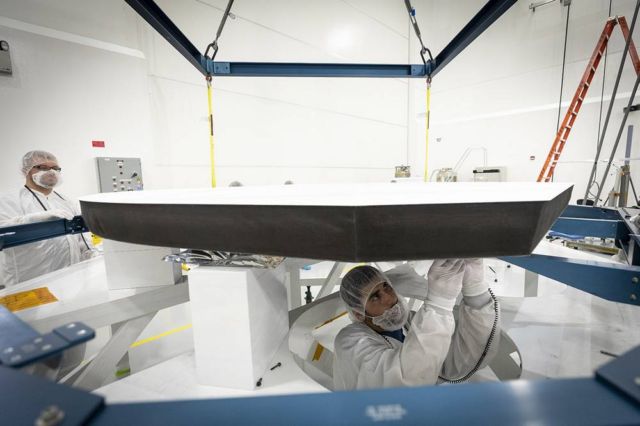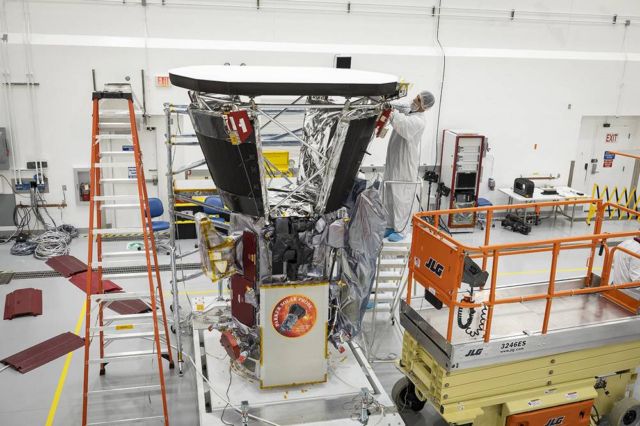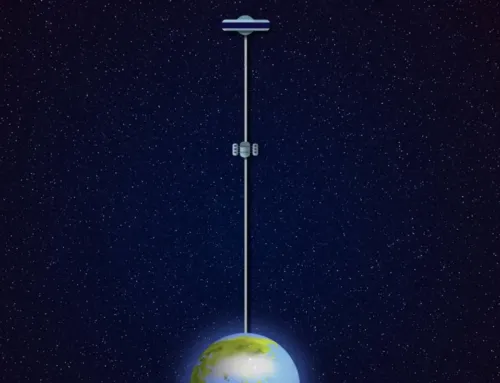The Parker Solar Probe’s heat shield, called the Thermal Protection System, or TPS, was installed on the spacecraft.
The launch of Parker Solar Probe, the mission that will get closer to the Sun than any human-made object has ever gone, is quickly approaching.
The eight-foot-diameter heat shield will safeguard everything within its umbra, the shadow it casts on the spacecraft. At Parker Solar Probe’s closest approach to the Sun, temperatures on the heat shield will reach nearly 2,500 degrees Fahrenheit, but the spacecraft and its instruments will be kept at a relatively comfortable temperature of about 85 degrees Fahrenheit.
A mission 60 years in the making, Parker Solar Probe will make a historic journey to the Sun’s corona, a region of the solar atmosphere.
Above, Parker Solar Probe’s heat shield is made of two panels of superheated carbon-carbon composite sandwiching a lightweight 4.5-inch-thick carbon foam core. To reflect as much of the Sun’s energy away from the spacecraft as possible, the Sun-facing side of the heat shield is also sprayed with a specially formulated white coating. Credits: NASA/Johns Hopkins APL/Ed Whitman
With the help of its revolutionary heat shield, now permanently attached to the spacecraft in preparation for its August 2018 launch, the spacecraft’s orbit will carry it to within 4 million miles of the Sun’s fiercely hot surface, where it will collect unprecedented data about the inner workings of the corona.
The Thermal Protection System connects to the custom-welded truss on the Parker Solar Probe spacecraft at six points to minimize heat conduction. Credits: NASA/Johns Hopkins APL/Ed Whitman
source NASA







Leave A Comment